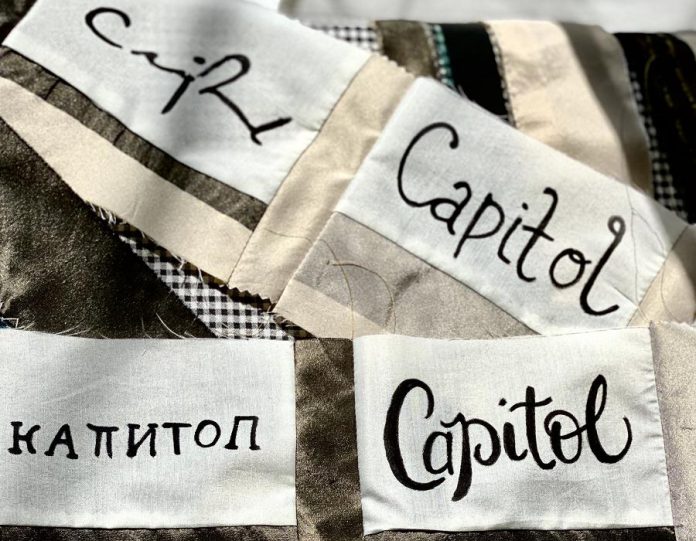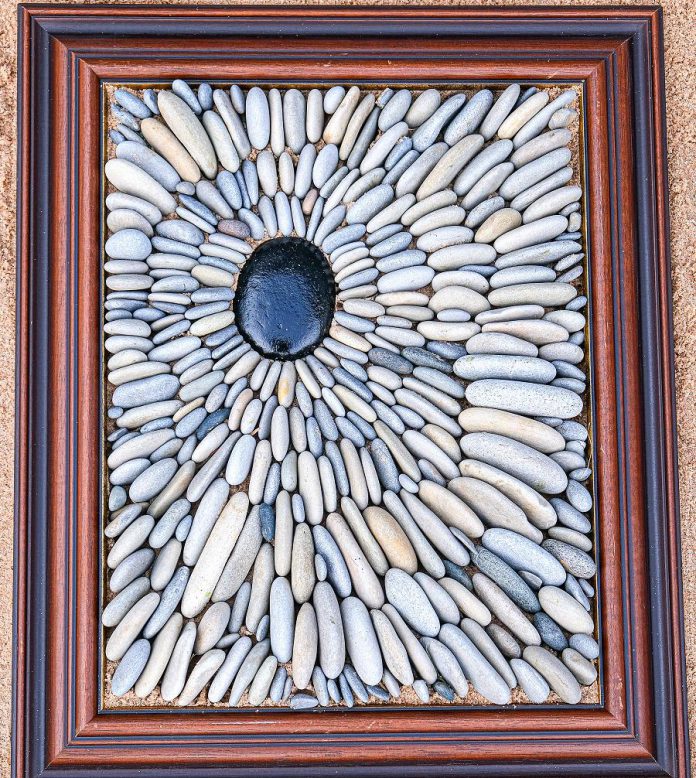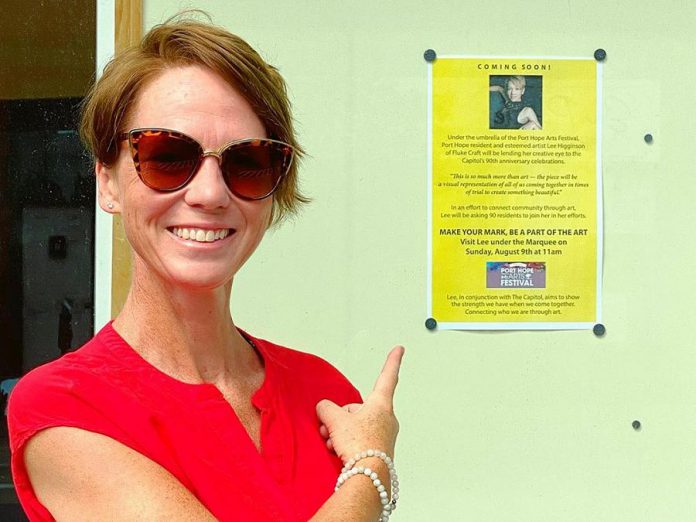
Port Hope artist Lee Higginson of Fluke Craft graciously took a break from putting the finishing touches on her latest large-scale collaborative art piece, “The Capitol Project”, to discuss her work, which will soon be unveiled to complete the month-long 90th anniversary celebrations for Port Hope’s Capitol Theatre.
It’s safe to assume that, when 2020 began, none of the folks at the Capitol could’ve imagined they’d be celebrating the historic theatre’s 90th anniversary during a global pandemic. Alas, our year of the virus had different plans.
However, August was filled with innovative and safe anniversary celebrations — a testament to the creativity and resiliency of the theatre’s staff, board, artists, volunteers, and sponsors.
Performances from the Capitol’s second floor Juliette windows were held for socially distanced audiences on the street, the Antique & Classic Car Club of Canada paraded vintage vehicles through downtown Port Hope, dancers performed on the sidewalks, and local businesses offered specialty items and prizes.
Amid the celebrations, under the umbrella of the Port Hope Arts Festival, Higginson was busy working on her latest creation. The Capitol Project is a massive collaborative art work with 90 unique pieces to celebrate the theatre’s anniversary.
“I was thrilled when the Capitol reached out to me about creating a work for their 90th anniversary,” said Higginson.
“As someone who lives here and goes to the theatre multiple times a year, I wanted to support the Capitol and to help show the public that they’re still here working to figure out how to make things work in this new reality.”

A national historic site, the Capitol was built at the dawn of the sound film era in 1930. Atypical for a depression-era building, the theatre was designed by the former president of the Ontario Association of Architects and constructed at a then-whopping cost of $80,000.
The building underwent museum-quality restorations in the ’90s, which also upgraded the movie theatre to a multi-purpose performing arts facility. It is one of the last remaining atmospheric theatres in North America.
Primarily a salvage artist, Higginson sourced materials for The Capitol Project from the historic theatre’s archives to honour the theatre’s 90 years in the community.

“I found curtains that used to hang in the theatre and a spool of film that had been damaged at one point; they were destined to be binned,” recalled Higginson.
“Feeling very Sound of Music-ish, I hauled these massive curtains and film remnants home and started to think about how I could use these pieces to create a big, visual representation that spoke to the Capitol’s anniversary in our current context.”
No stranger to large-scale collaborative works of art, Higginson knows the power of community-based works: “I believe that art is for everybody — that everybody can be engaged in the process of creation.”

In the case of The Capitol Project, Higginson reached out to Port Hope community members and notable artists with ties to the community, such as Andy Muschietti who directed the “It” movies filmed in Port Hope.
“I started to collect signatures,” Higginson explained, “but not the signatures of their names; rather, the ways these individuals wrote the word ‘Capitol’. I have 90 Capitol signatures, some in different alphabets even, which will all be bound together in this piece and a didactic legend will hang in the window showing whose signature is whose.”
Much has been written about the concept of the signature. For philosopher Jacques Derrida, the act of writing implies the absence of both the reader (at the time of writing) and the writer (at the time of reading). Though the writing exists independently of both reader and writer, it remains paradoxically linked to a presence.

Higginson’s incorporation of signatures brings presence to absence in these strange COVID times. From the salvaged curtains — which likely witnessed a first kiss or two — to the found-footage that binds the contemporary signatures, the piece whispers to the future: “we were here.”
The work, like Derrida’s, could be considered an investigation of the nature of iterability, repetition, absence, and context. The Capitol Project quite literally stitches together past, present, and future.
“I wanted this piece to show that, as a community, there are still ways for us to come together to create — to collaborate — and to build something together,” Higginson added. “I believe in my heart that part of the necessary healing from this collective trauma comes from the arts and the act of collaboration.”
Higginson is currently in the final stages of assembling the sepia-toned 10′ x 4.5′ piece of art. For updates on the official unveiling of the work, follow Lee Higginson on Instagram and Facebook and the Capitol Theatre on Instagram and Facebook.


























